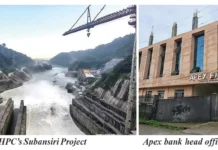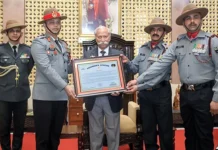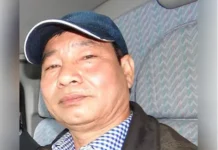[Bengia Ajum]
HAWAI, 20 Aug: A section of villages likely to be affected by the proposed Kalai-II Hydro Electric Project (1200 MW) in Anjaw district has written to the Arunachal Pradesh State Pollution Control Board (APSPCB), alleging a lack of transparency in conducting the Environmental Impact Assessment (EIA) and Social Impact Assessment (SIA). THDC India Limited is executing the project. A public hearing for environmental clearance took place here on Wednesday.
Members of the Nukung Welfare Society (NWS), representing the villages of Nukung and Mla, both facing impact from the project, alleged that their voices have consistently been overlooked. NWS chairman Rohsman Tawsik told this daily, “I placed our concerns on behalf of NWS today during the public hearing for environmental clearance. We have been raising these concerns ever since the SIA was conducted. We don’t want the dam, but we are becoming a minority. Short sighted people are supporting it.”
He added that APSPCB has yet to respond to the grievances submitted by the society. He further alleged that both the EIA and SIA were carried out in a flawed and non-transparent manner: “From the pre feasibility report to the current EIA hearing and the earlier SIA, there has been no transparency. The SIA and EIA reports appear to be copied and pasted from other projects, with no real field verification. The villagers were excluded from decision-making at every stage.” He emphasized that the people of Nukung and Mla have never given prior informed consent for the Kalai-II HEP.
“Nukung village will be completely submerged if this project proceeds,” he said. “The project will also destroy sacred Mishmi cultural sites, including Hutung Graam, Mlaang and Mlaanguh’s Farm, Kaapiyu Raknaang,Parshuram Kund and Nimkeh downstream, Khi-Maan-Kaman stone inscriptions at Krosam, and La ul, the sacred site of the deities,” he added.
Meanwhile, in their written objection submitted to APSPCB, the NWS detailed additional concerns which include potential massive damage to the area’s biodiversity, significant socio-economic impacts on the local community, security risks due to proximity to the international border, inadequate resettlement and rehabilitation (R&R) planning, and the need for independent verification of the situation in the villages.
They also presented six specific demands for the Nukung and Mla communities. “The government should reconsider/abandon the project unless the genuine consent of affected communities is obtained. If they intend to go ahead, then they should ensure a transparent, participatory, and independently monitored R&R plan. Also recognise Nukung as a special, separate category (the only original submerged village),” the NWS demanded. Further, they sought to guarantee priority employment and lifetime welfare benefits to Nukung and Mla villagers.
The NWS also called for preserving Mishmi cultural sites through relocation/preservation and compensating fully for medicinal plants, forests, agriculture, bamboo groves, hunting grounds, grazing grounds, water sources, and fisheries.



